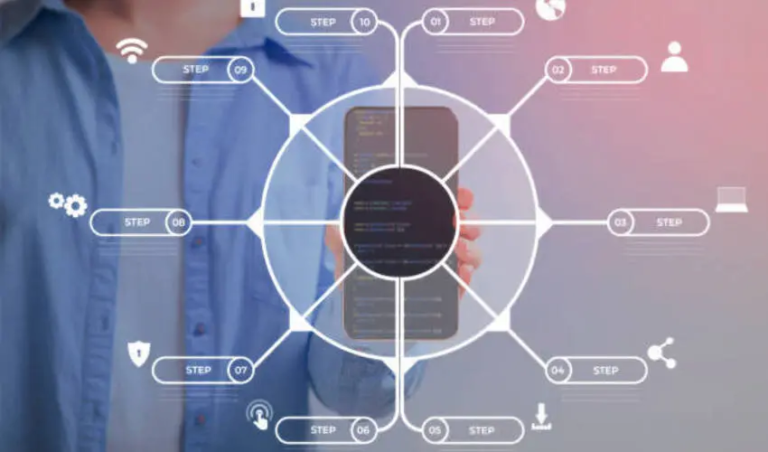Previously, businesses incorporated enterprise software that managed numerous business processes. It served as a literal one-stop shop of administrative functions like inventory management, human resources, and finances. These products are called enterprise resource planning or ERP products.
The majority of the software products like these were giants to create, maintain, and launch. The complete system was locally installed, including the database. Most of these traditional ERPs are reliable and stable, and they complete their job successfully.
Therefore, Enterprise-as-a-service (EaaS) has taken over legacy ERP software as the system of choice for working on business operations. Various companies sign up with 3rd party EaaS platforms, while others select their homegrown versions.
Introduction
Defining EaaS
EaaS is defined as a cloud computing service that offers business process management and relevant software products to its clients. It can entail one business function, like a wide variety of relevant functions, and vendor tracking.
This is because it is an EaaS product that is online-hosted. Authorized users can access it anytime and anywhere. It is simple for employees to function collaboratively even when connecting from home or off-site from home.
Here are five ways to develop scalable software in 2025 for EaaS:
Follow One Standard Architecture
You have an outstanding idea for the latest EaaS product that will be the latest: the features offered, the technology utilized, and the architecture incorporated. Everything goes smoothly and product launches.
After five years, the latest architecture upon which you create your EaaS platform has fallen out of favor. Some developers rely on or know the latest technology utilized for their code, which makes it difficult and expensive to scale the platform up.
If you want to create a future-proof platform, you should depend on popular technology or standard architecture. You are not going to get any innovation awards. However, you will be making it simpler to expand on and create your product in the coming years.
Distinct Your Layers
Incorporating a standard layer architecture will go a long way in the direction of guaranteeing that your software can scale based on your requirements. For example, if you need to upgrade the software so that it can be utilized in new gadgets. You would just need the presentation layers. If you require upgrading the class library and business definitions, you would update the business layer.
A layer-based architecture safeguards your developers from having to upgrade various platform areas to make one change.
Reserve Whenever Possible.
Reserving outside of your database decreases the database engine workload. The more reserving possibilities you use, the more available bandwidth you leave for the other significant procedures.
There are various sorts of caches you can utilize, each with its benefits and drawbacks. Local reserves are the most commonly used and simplest techniques of accelerating performance are ideal for web apps like an EaaS platform. A focused remote reserve is practical because all of your EaaS customers can connect to the same information storage support and only have to load the data once.
Proper reserving enables your EaaS to scale horizontally and not vertically. You have set yourself up appropriately for upcoming growth.
Consider Microservices
A microservices architecture is defined as an architectural technique in which a platform is created around a collection of expert services rather than one large app. Every microservice is independently positioned and maintained, and accomplishes one or a small set of business objectives.
When you are required to scale your platform, you can either exchange one microservice for another or upgrade an individual microservice with ease.
Taking Advantage of APIs
APIs and microservices go hand in hand. Private APIs make your EaaS modular, sufficient to be able to scale based on future requirements. Various API design styles like gRPC, SOAP, and REST provide your team with various options on the way to approaching a microservice-based architecture.
However, APIs are not just for internal microservices. You can expose public endpoints that permit your EaaS product to interact with 3rd party apps. This permits your users to spread the platform functionality and integrate it within their tech stack.
In Conclusion
Scalability is not considered an option when it comes to creating an EaaS platform. It is not just necessary. However, it is the main reason EaaS is superior to legacy ERPs.
When you follow suitable coding rules, utilize scalable design architecture, and open yourself up to 3rd party apps, you are creating a product that can scale in functionality and performance. You are creating a product with some effort that can expand to match whatever is needed in the coming period.
Frequently Asked Questions (FAQs)
What is meant by EaaS?
EaaS is defined as a cloud computing service that offers business process management and relevant software products to its clients. It can entail one business function, like a wide variety of relevant functions, and vendor tracking.
This is because it is an EaaS product that is online-hosted. Authorized users can access it anytime and anywhere. It is simple for employees to function collaboratively even when connecting from home or off-site from home.
How to develop scalable software in 2025 for EaaS?
- Follow One Standard Architecture
- Distinct Your Layers
- Reserve Whenever Possible.
- Consider Microservices
- Taking Advantage of APIs






